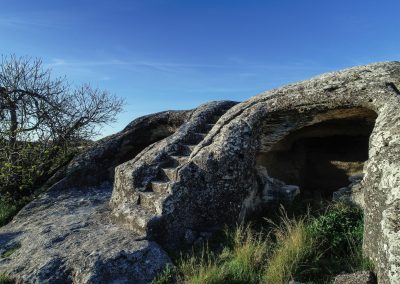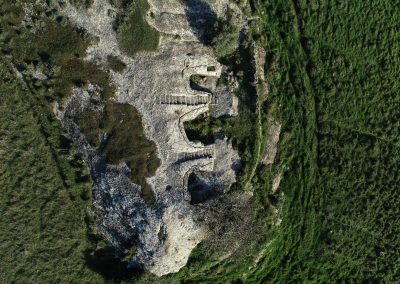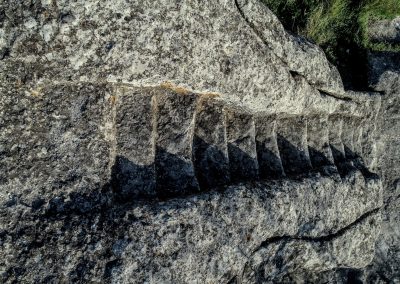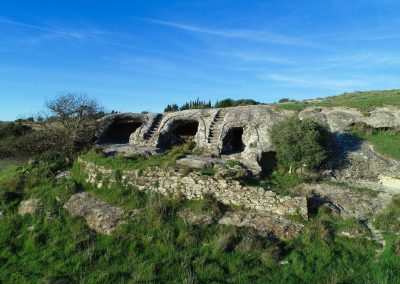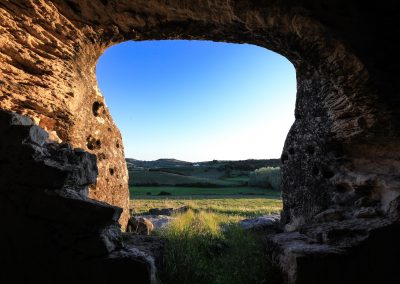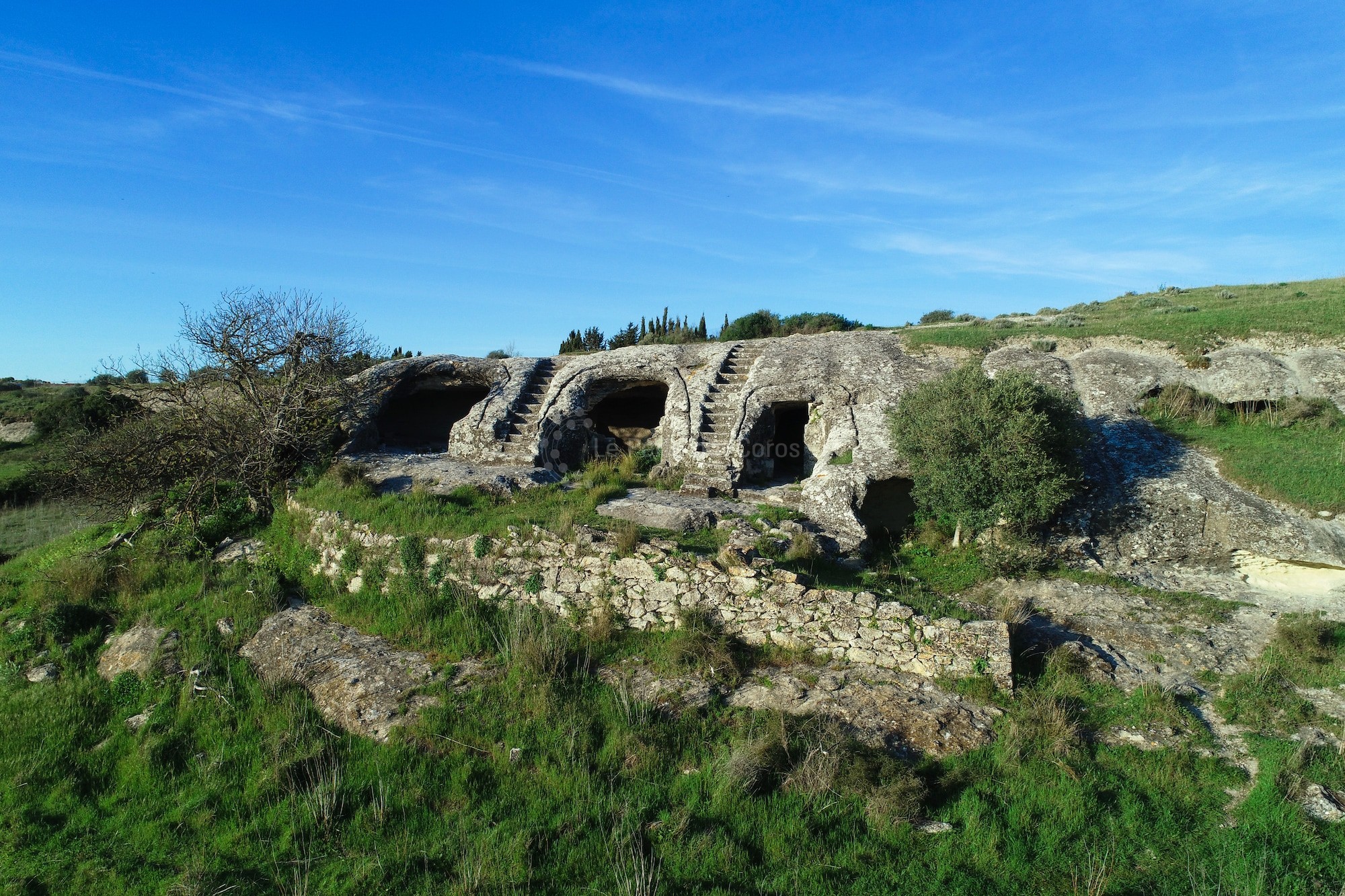
Ittiri
Musellos necropolis
The domus de janas (tn* Neolithic tombs carved into rock called “houses of the fairies”) of Musellos are found on the plain, about 800 metres to the east of the Nuraghe Majore (tn* nuraghe: large megalithic, tower-shaped, prehistoric stone structures found in Sardinia, dating from the second millennium BC to the Roman conquest). They are made from big trachyte slabs, of an irregular parallelepiped shape, standing vertically in the ground. The area consists of a plateau of mainly trachyte and basalt rock, crossed by fertile valleys dedicated to farming. In the territory of Ittiri the number of monuments is pretty high and there is evidence of the Nuragic (tn* Bronze Age, 1800-1500 BC) and Pre-Nuragic periods (tn* Sardinian prehistory dating back from 4000 to 3000 BC, from the Palaeolithic to the middle Bronze Age). As part of the latter there is the Hypogeous Necropolis of Musellos, comprising six hypogea dispersed over a vast area on a hill of limestone. The main nucleus of the necropolis of Musellos is a tomb with three wide chambers connected to each other and arranged in succession from north to south, around which there are other smaller hypogea. On the side walls of the central chamber there are two steps that enable you to reach the ground above. The northern chamber, which has undergone major transformations, has an irregular square plan, with the right part elevated compared to the rest of the room. On the architrave of the doorway that adjoins this chamber with the second one, there is an engraved cross, indicating the frequentation of these spaces by Christians (tn* in a successive period). About 200 metres ahead, there is a low rocky wall where there are another two tombs, only one of which is accessible because the other is completely covered by lush vegetation. You can then continue and reach the paved road and, by going back about 500 metres, you can observe in a field on the right, a few metres from the pavement, two additional domus side by side, one has a mono-cellular plan, almost similar to a niche, the other of bigger dimensions, but in a poor state of conservation.
Source: “Archaeological itineraries in the territory of Ittiri” (in Italian) by Gianni Canu, site Town of Ittiri

